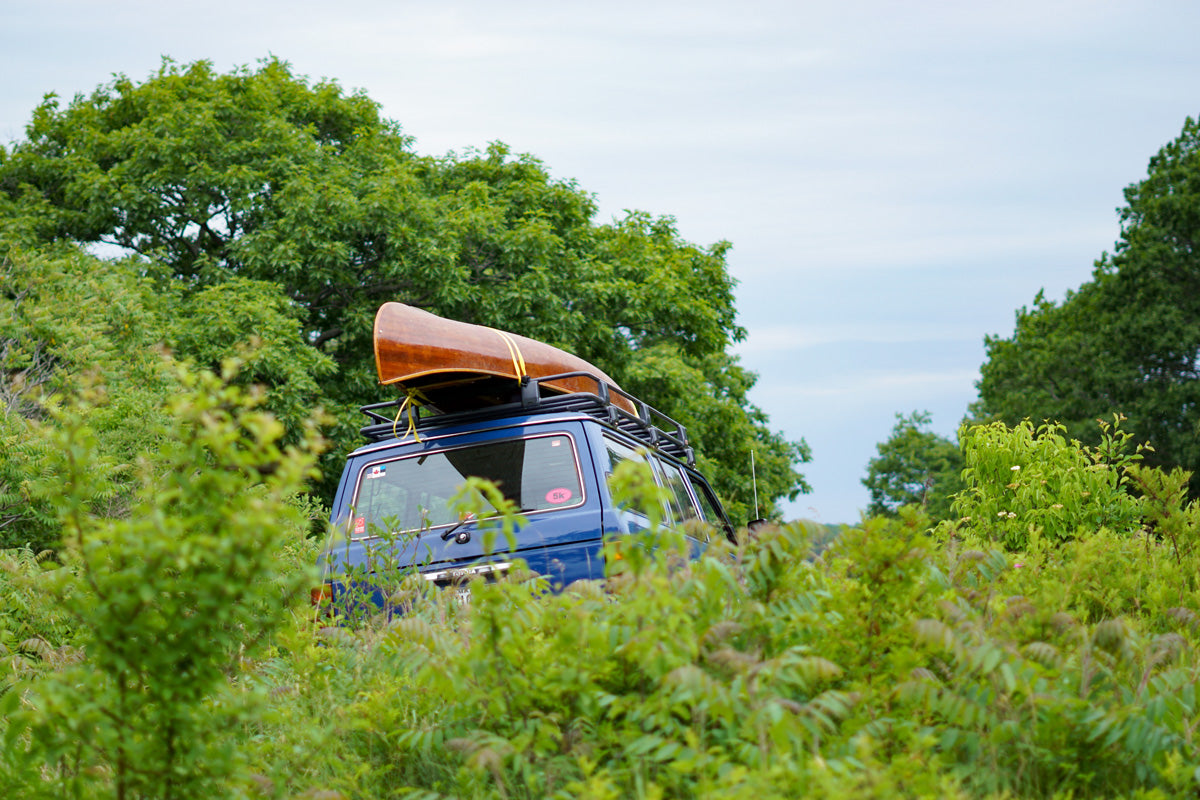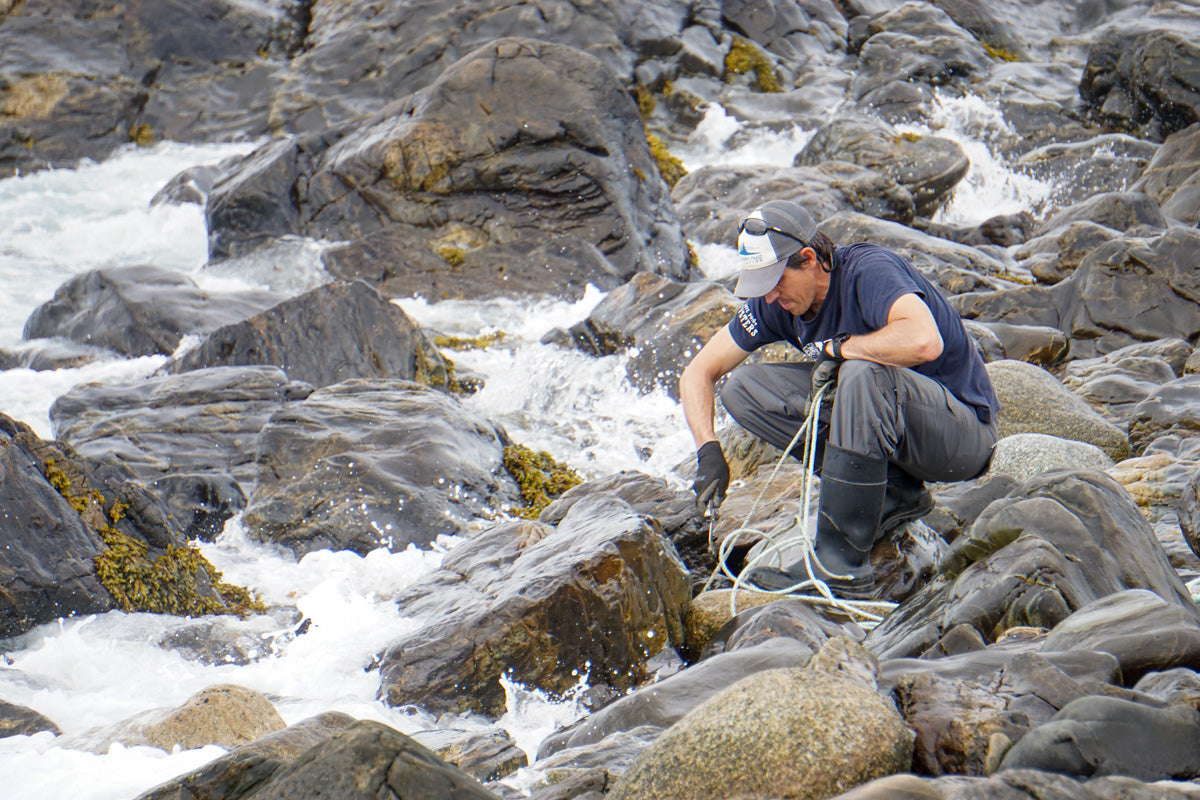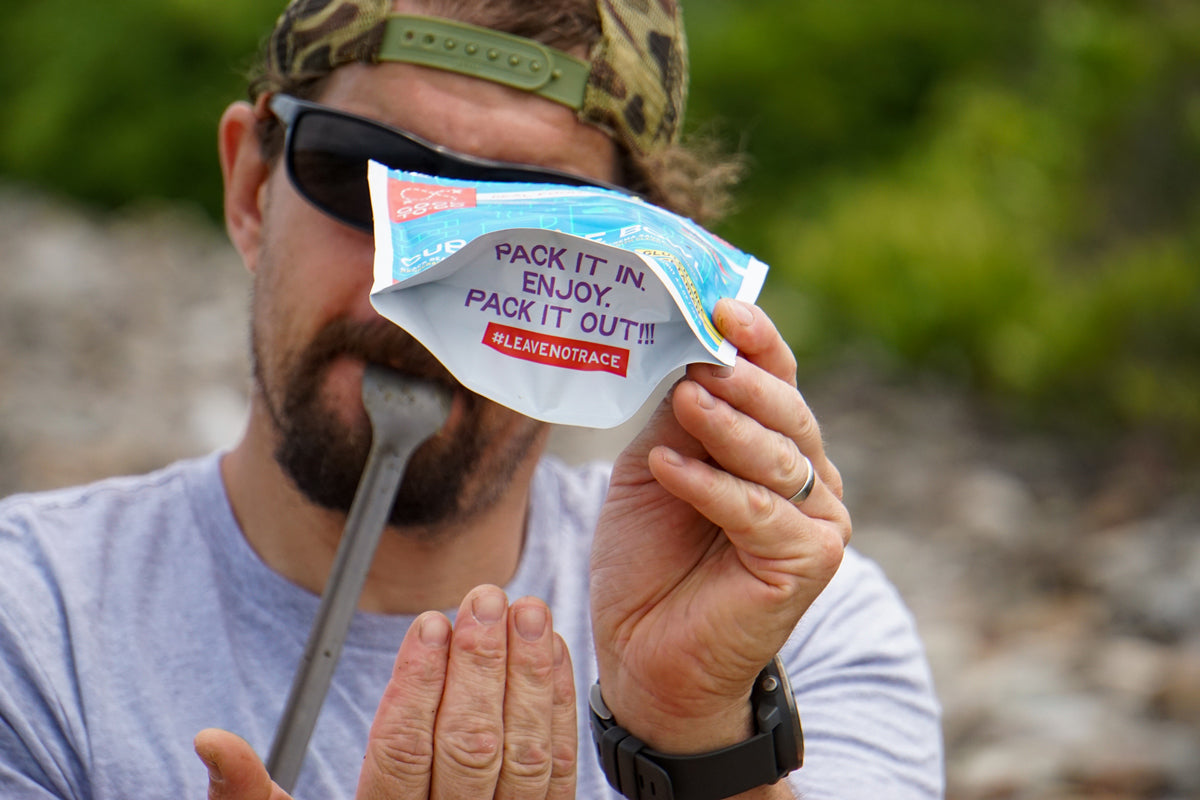It was a perfect June morning on the Maine coast. We slowly drove along an old, overgrown road leading down to Timber Point, part of the Rachel Carson Wildlife Refuge. This area of Southern Maine is known for its quintessential rocky coastline, expansive estuaries and salt marsh, combined with white sand beaches that might be mistaken for something more tropical, were it not for the 60 °F water temps. The access road brought us to an old, seemingly forgotten mansion from another era, with sweeping views of the Atlantic Ocean. Just offshore lies Timber Island, a small, federally protected island that at low tide you can walk to.

The 13-acre island is stewarded by the Maine Island Trail Association (MITA), a Portland, ME-based non-profit membership organization. As fellow Mainers, we here at Good To-Go jumped at an opportunity to meet up with MITA's Jordi St. John, Business Engagement Manager, and Chris Wall, Regional Stewardship Manager, for a clean-up of the island.
For those unfamiliar, the Maine Island Trail is a 375-mile recreational water trail spanning the length of the Maine coast, from the New Hampshire border to Canada. 240 wild islands and mainland sites offer boaters day use and/or overnight camping. Site owners allow access to their properties, trusting that MITA members and other users will be responsible stewards during their visits. As there is no official route along the Trail, most users explore it gradually over time. It is a beloved resource to those who have had the pleasure to experience it.
Founded in 1988 to administer the Maine Island Trail, MITA embraces the powerfully simple idea that care of the islands can be left to the users of these treasured and fragile places. Islands visited by members tend to be in better shape than those left alone. Volunteers dedicate hundreds of hours every year to remove marine debris from beaches, maintain campsites and manage invasive plant species.
 We met up with Jordi and Chris on the mainland, loaded our gear onto the boats, then made the brief paddle over to Timber Island. There were six of us in our group, and we wasted no time moving up the shoreline in search of trash and fishing gear to remove from the otherwise pristine parcel of land.
We met up with Jordi and Chris on the mainland, loaded our gear onto the boats, then made the brief paddle over to Timber Island. There were six of us in our group, and we wasted no time moving up the shoreline in search of trash and fishing gear to remove from the otherwise pristine parcel of land.



The impact humans have on the ocean can be seen walking most any shoreline, anywhere. Here was no different. We found items ranging from birthday balloons, dog toys, and plastic bottles, to smaller unidentifiable pieces of micro plastics. The amount of micro plastic is astounding, as it works its way into the seaweed, the nooks and crannies in the granite, and it all but disappears when it lands in beach sand.

 And then there were the lobster traps. You might be wondering how so many ended up here on this little island. Maritime storms are notorious for wreaking havoc on lobster gear. Lobstermen (and women!) set traps on what are called trawls, connecting many traps along a single line that rests along the sea floor, tethered to two leaders that extend to the surface with a buoy/marker. When storms churn up the Gulf of Maine, these traps can travel distances, often washing up on shore. State law actually prohibits the removal of the traps. It's the owner of the traps who is permitted to retrieve their own gear. As you might imagine, it's not too often people go to lengths to first locate, then painstakingly extract, the twisted remains. Fortunately, as Timber Island is Federally owned, this law didn't apply, and we were free to remove any traps we came across.
And then there were the lobster traps. You might be wondering how so many ended up here on this little island. Maritime storms are notorious for wreaking havoc on lobster gear. Lobstermen (and women!) set traps on what are called trawls, connecting many traps along a single line that rests along the sea floor, tethered to two leaders that extend to the surface with a buoy/marker. When storms churn up the Gulf of Maine, these traps can travel distances, often washing up on shore. State law actually prohibits the removal of the traps. It's the owner of the traps who is permitted to retrieve their own gear. As you might imagine, it's not too often people go to lengths to first locate, then painstakingly extract, the twisted remains. Fortunately, as Timber Island is Federally owned, this law didn't apply, and we were free to remove any traps we came across.

 For lunch we enjoyed a round of Good To-Go meals, cooked by none other than Good To-Go Co-founders Jen Scism and David Koorits. One great thing about these meals is just how easy they are to prepare. Being able to enjoy delicious, handcrafted food by simply adding boiling water—it doesn’t get much easier than that.
For lunch we enjoyed a round of Good To-Go meals, cooked by none other than Good To-Go Co-founders Jen Scism and David Koorits. One great thing about these meals is just how easy they are to prepare. Being able to enjoy delicious, handcrafted food by simply adding boiling water—it doesn’t get much easier than that.



After the break, we got back to work and began schlepping our collection of trash back to the mainland. The MITA skiff makes a great trash-hauling trailer after island cleanups. It’s common to see a skiff loaded up like this after an island cleanup, underscoring the importance of such volunteer work in a state with more than 4,600 coastal islands.
There's an incredible feeling you get after a long day of volunteer work. Sure, we were tired, sweaty and bug-bitten—we even had our share of bumps and bruises. These feelings are temporary, of course. The lasting memories are those of time spent with friends, new and old, getting to do what we love most—enjoying the outdoors. And in doing so we invested in a valuable resource, so that future visitors may continue to enjoy the landscape.
Interested in learning more about MITA? Click here and while you’re at it, consider signing up for a membership. Beyond the benefits of supporting the stewardship of Maine’s wild islands, members get access to some great perks, such as discounts on Good To-Go meals, boat rentals, campgrounds, and a whole lot more.
Photos and story by Justin Hagen





